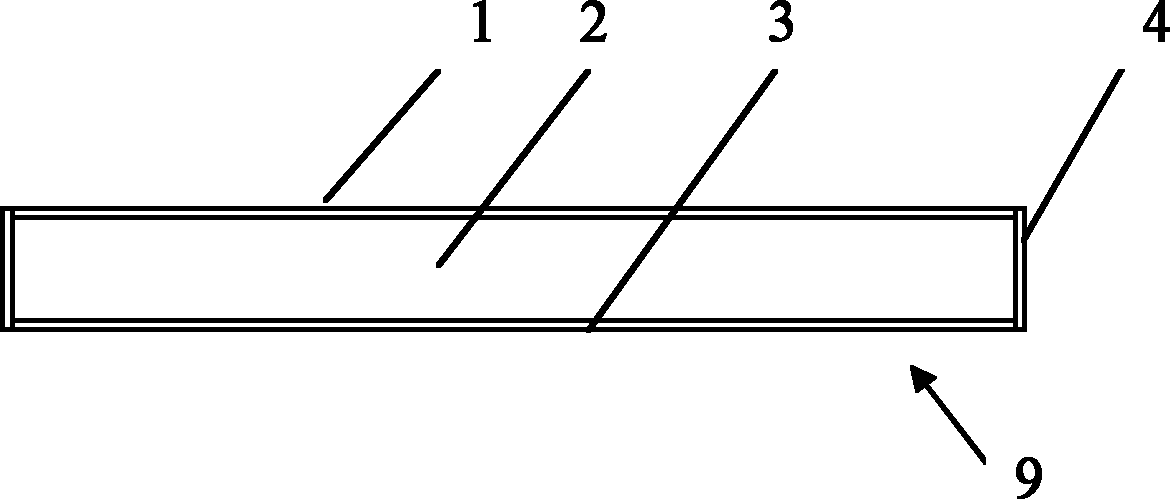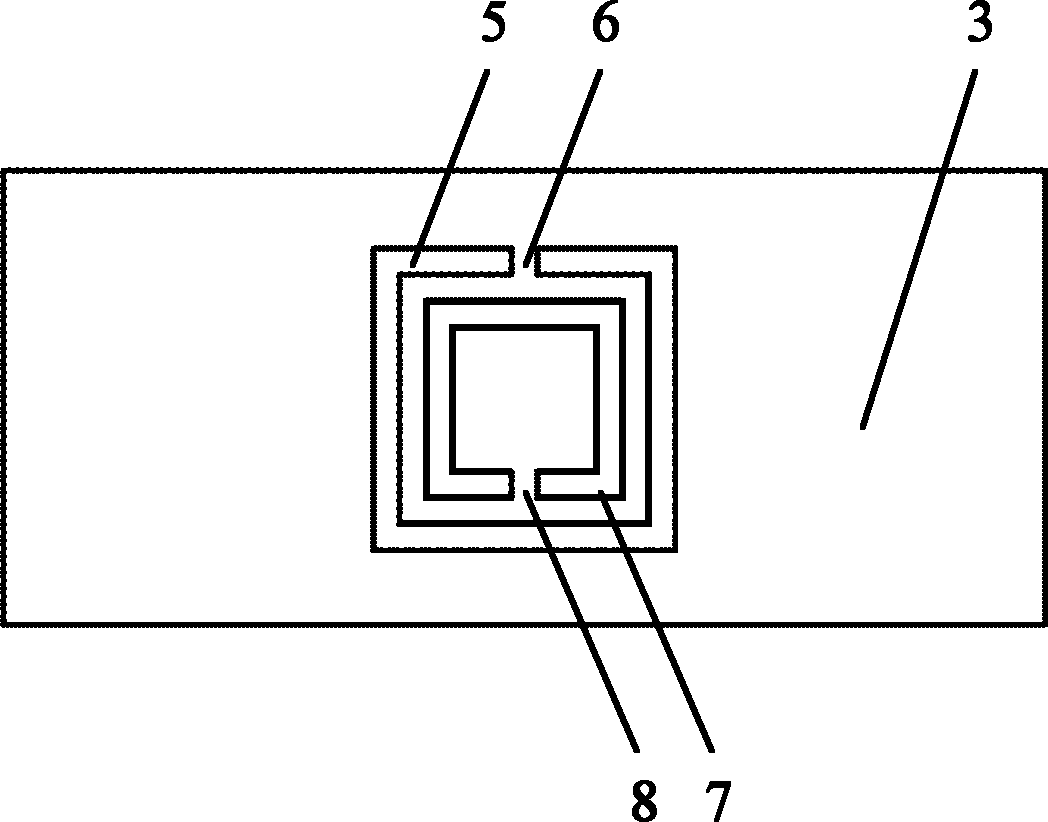Microstrip patch type radio frequency identification (RFID) tag antenna
An RFID tag and microstrip patch technology, applied in the field of RFID tag antennas, can solve the problems of increased RFID tag antenna dimensions, inconsistent RFID tag antennas, poor reading distance, etc., to achieve high-bandwidth identifiable range, The effect of improved reading and writing distance
- Summary
- Abstract
- Description
- Claims
- Application Information
AI Technical Summary
Problems solved by technology
Method used
Image
Examples
Embodiment Construction
[0010] The specific implementation process of the present invention will be described in detail below in conjunction with the accompanying drawings.
[0011] see figure 1 with figure 2 , the microstrip patch type RFID tag antenna 9 of the present invention has a substrate 2 and a radiation plate 1 attached to the upper surface of the substrate and a substrate bottom plate 3 attached to the lower surface respectively, and the substrate 2 has short-circuit surfaces 4 on both sides.
[0012] The substrate bottom plate 3 of the present invention has a first opening annular groove 5 and a second opening annular groove 7, and coupling between the first opening annular groove 5 and the second opening annular groove 7 reduces the resonant frequency of the RFID tag antenna 9, Improve the reading distance of the RFID tag antenna.
[0013] As a preferred embodiment of the present invention, the first open annular groove 5 and the second open annular groove 7 are both square, the top o...
PUM
 Login to View More
Login to View More Abstract
Description
Claims
Application Information
 Login to View More
Login to View More - R&D
- Intellectual Property
- Life Sciences
- Materials
- Tech Scout
- Unparalleled Data Quality
- Higher Quality Content
- 60% Fewer Hallucinations
Browse by: Latest US Patents, China's latest patents, Technical Efficacy Thesaurus, Application Domain, Technology Topic, Popular Technical Reports.
© 2025 PatSnap. All rights reserved.Legal|Privacy policy|Modern Slavery Act Transparency Statement|Sitemap|About US| Contact US: help@patsnap.com



